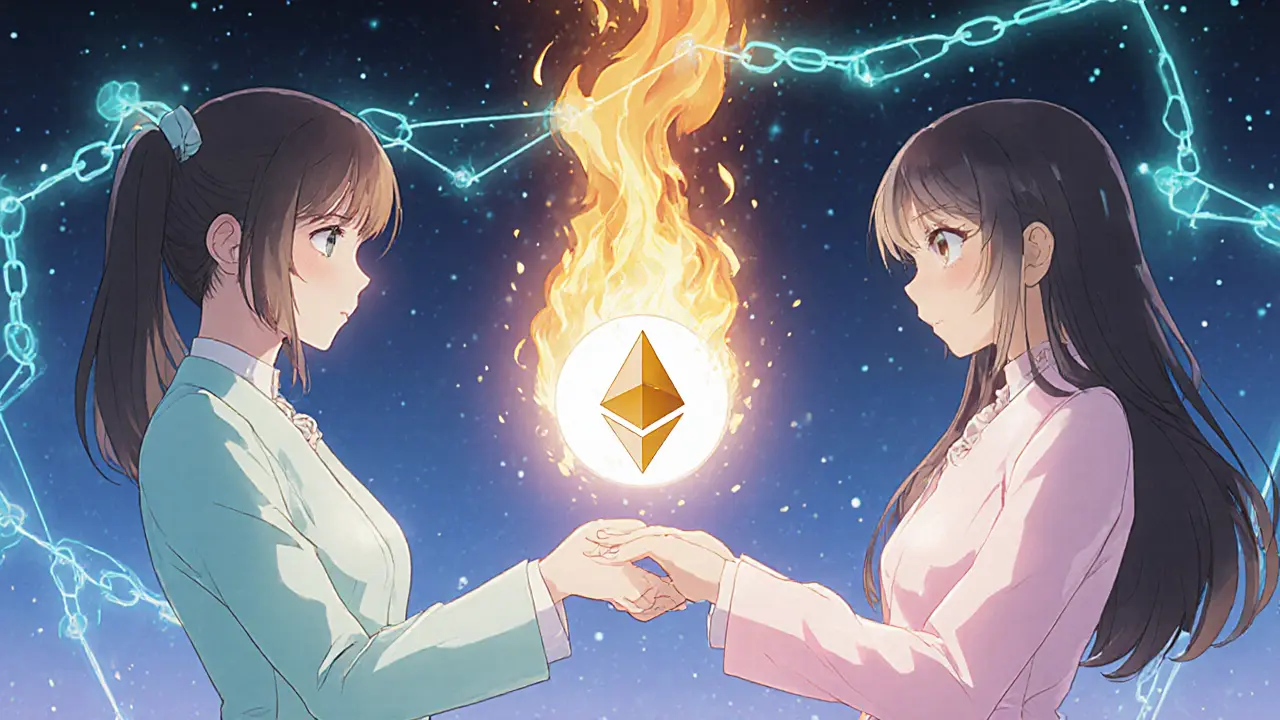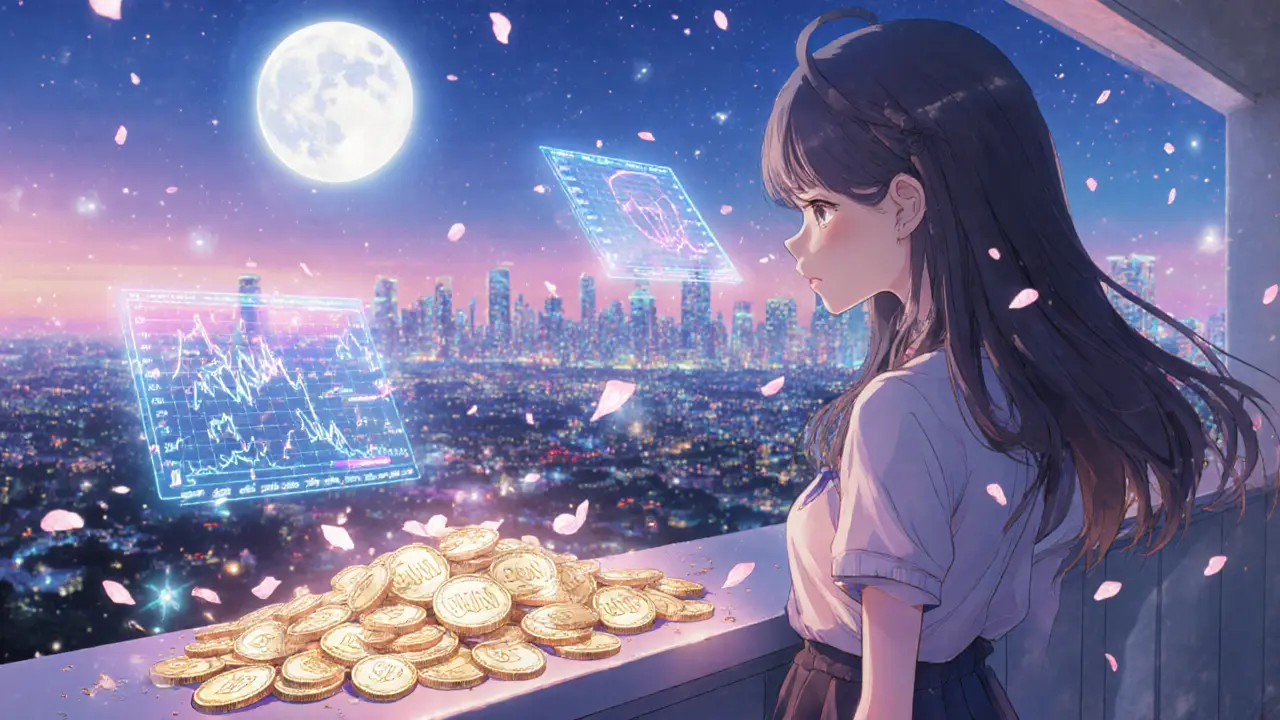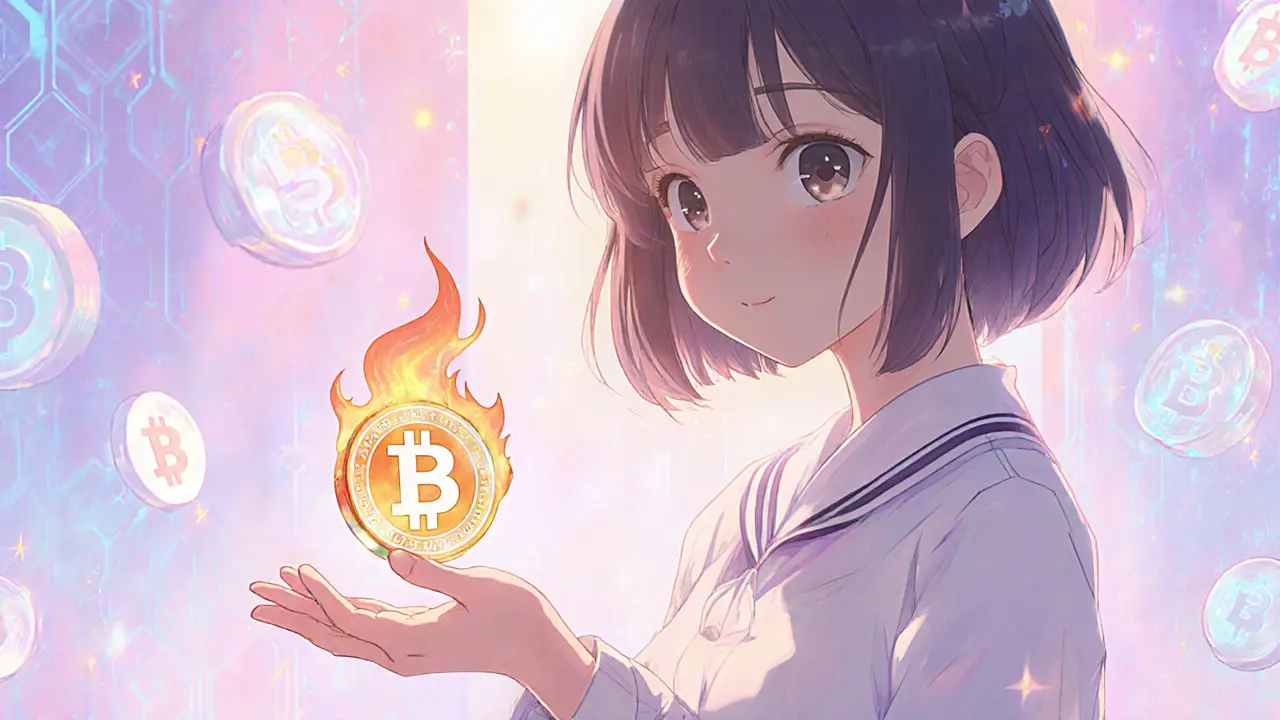BURN Token Supply Calculator
This calculator demonstrates how BURN token supply decreases with each transaction due to its automatic burn mechanism.
Enter initial supply, burn rate, and number of transactions to see how much supply remains.
Results
After 0 transactions, the remaining supply is:
0
That's a 0% reduction from the original supply.
When you hear the name Burn (BURN) is a hyper‑deflationary cryptocurrency that automatically reduces its own supply with every transaction. Unlike most coins that keep a fixed supply or burn tokens only at scheduled intervals, BURN’s code makes every trade a “burn event,” pushing scarcity forward in real time.
Quick Summary
- Burn token cuts its circulating supply on each transfer.
- Designed as a pure hyper‑deflationary asset, not just a periodic burn.
- Runs on a Ethereum‑compatible blockchain using standard ERC‑20 smart contracts.
- Potential upside: scarcity could boost price if demand holds.
- Risks: extreme supply shrinkage, liquidity loss, limited utility beyond burning.
What Makes BURN Different?
Most deflationary tokens burn a small percentage of fees once a day, week, or quarter. BURN flips that model: every single token move triggers an automatic, irreversible burn of a preset % (usually 0.5‑2%). The math is simple: if you send 100 BURN, the protocol deducts the burn fee, sends the remainder to the recipient, and sends the burned portion to a burn address with no private key. Because no one can ever retrieve coins from that address, the supply loss is permanent.
How the Automatic Burn Works
- Sender initiates a transfer via a wallet or DEX.
- The BURN smart contract calculates the burn portion (e.g., 1%).
- The contract moves the burn amount to a burn address (often 0x000...dead).
- The remaining tokens are transferred to the recipient.
- The total supply variable stored on‑chain is updated to reflect the loss.
This process happens in a single transaction, so users don’t need to take extra steps. The transparent nature of blockchain lets anyone verify the exact supply after each block.
Why Token Burning Matters
Token burning is essentially the digital version of physically destroying money. By permanently removing units, the remaining coins become rarer, and basic supply‑and‑demand economics suggest a price rise if demand stays steady. Projects like Ethereum (EIP‑1559) and Binance Coin (BNB) use burns to signal commitment to scarcity and to reward long‑term holders.

Comparison with Other Burn‑Based Tokens
| Token | Burn Trigger | Burn Frequency | Typical Burn Rate | Primary Goal |
|---|---|---|---|---|
| Burn (BURN) | Every transaction | Instant (per tx) | 0.5‑2% of amount | Continuous scarcity creation |
| Binance Coin (BNB) | Gas fees & quarterly auto‑burn | Real‑time + quarterly | Variable, based on price & block count | Reward ecosystem participants, maintain token value |
| Ethereum (ETH) | EIP‑1559 fee‑burn | Every block | Up to ~2% of total fees | Deflationary pressure post‑merge |
Potential Benefits for Holders
- Scarcity‑driven upside: As supply shrinks, each remaining token represents a larger share of the total market.
- Transparency: All burns are recorded on‑chain, so no hidden minting.
- Simple economics: No complex staking or governance needed to see the deflation effect.
Risks and Criticisms
- Liquidity erosion: As the pool of tradable tokens diminishes, price volatility can spike.
- Value dilution risk: If demand does not keep pace, the token may become too scarce to trade, hurting utility.
- Marketing gimmick concern: Some analysts argue that constant burning is used more for hype than sustainable economics.
- Limited use‑case: BURN currently offers few functions beyond its burn mechanic, making it dependent on speculative demand.
How to Acquire and Store BURN
Because BURN follows the ERC‑20 standard, it’s compatible with most Ethereum wallets-MetaMask, Trust Wallet, and hardware options like Ledger. To buy BURN, look for listings on decentralized exchanges (Uniswap, SushiSwap) or smaller centralized platforms that have added the token. Always verify the contract address from the official project channel before transferring.
Future Outlook
For BURN to survive beyond the novelty phase, the team will need to broaden utility-perhaps integrating the token into a DeFi platform, NFT marketplace, or as fee‑payment on its own chain. Community growth, clear roadmap, and regular audits will also help convince skeptics that the hyper‑deflationary model isn’t just a short‑term price pump.

Frequently Asked Questions
What does the BURN token ticker stand for?
The ticker BURN simply reflects the token’s core mission: every transaction “burns” a portion of the supply.
On which blockchain does BURN operate?
BURN is an ERC‑20 token on the Ethereum network, making it compatible with any wallet that supports Ethereum assets.
How is the burn percentage determined?
The smart contract sets a fixed burn rate (commonly 1%) that applies to every transfer. Some versions allow the rate to be adjusted via governance, but the current public code shows a static value.
Can the burned tokens ever be recovered?
No. Tokens sent to the burn address have no private key, meaning they are permanently removed from circulation.
Is BURN a good investment?
Investment decisions depend on your risk tolerance. The hyper‑deflationary model can boost price if demand holds, but extreme scarcity can also lead to illiquidity. Do thorough research and never invest more than you can afford to lose.


Kimberly M
December 11, 2024 AT 17:23Nice breakdown of the burn mechanics 😊
Navneet kaur
December 14, 2024 AT 00:56i think its good but also very risky i dont know how it will work for real
Marketta Hawkins
December 16, 2024 AT 02:56Obviously anyone who doesn’t see the value in a hyper‑deflationary token is just missing the point 😏
Drizzy Drake
December 17, 2024 AT 20:36When you look at BURN’s design, the first thing that stands out is the constant pressure on supply with every transaction. This creates a dynamic where each trade not only moves value but also reduces the total pool of tokens. Over time, that can lead to a noticeable scarcity effect, especially if the community continues to trade actively. However, scarcity alone does not guarantee price appreciation; demand must keep pace with the shrinking supply. If buyers lose interest, the token could become illiquid, making it hard to execute even small trades. One practical concern is the impact on liquidity pools on DEXs, where burn fees effectively act as a tax on every swap. That tax can deter high‑frequency traders and arbitrage bots, which are often the lifeblood of price discovery. On the other hand, some holders see the burn as a built‑in reward for long‑term patience, akin to staking rewards but without the need to lock up assets. The transparency of on‑chain burns is a strong point-anyone can verify how many tokens have been removed. Yet the code also allows for future adjustments to the burn rate, which could be a red flag if the community does not have proper governance mechanisms. From a risk management perspective, diversifying away from a single hyper‑deflationary token is prudent. It’s also wise to keep a portion of your portfolio in more stable assets to weather any volatility spikes. Finally, if you decide to hold BURN, using a hardware wallet can protect you from phishing attacks that target newer tokens. In summary, BURN offers an interesting experiment in tokenomics, but it comes with both upside potential and significant pitfalls that every investor should weigh carefully. Stay updated with the project's announcements to catch any changes early.
AJAY KUMAR
December 19, 2024 AT 08:43This is exactly why we need strong tokenomics to protect our national crypto interests!
bob newman
December 20, 2024 AT 18:03Sure, the burn is just a distraction while the devs print new coins behind the scenes 😒
Anil Paudyal
December 22, 2024 AT 00:36looks cool but watch the liquidity
Kimberly Gilliam
December 23, 2024 AT 04:23another hype token that's gonna crash
Jeannie Conforti
December 24, 2024 AT 05:23actually many projects survive if they find a real use case later
tim nelson
December 25, 2024 AT 03:36the scarcity model sounds cool but if demand dries up you’ll just end up with a dead coin
Zack Mast
December 25, 2024 AT 23:03Burning tokens is like letting time erase memories; it’s poetic yet dangerous
Dale Breithaupt
December 26, 2024 AT 15:43still, that poetic angle can attract a niche community
Rasean Bryant
December 27, 2024 AT 05:36With careful community building, BURN could become a staple for deflationary enthusiasts.
Angie Food
December 27, 2024 AT 16:43or maybe it’s just another fad that will disappear soon
Jonathan Tsilimos
December 28, 2024 AT 01:03The tokenomic architecture exhibits a perpetual decremental supply curve, which may induce price volatility under low liquidity conditions.
jeffrey najar
December 28, 2024 AT 07:59For newcomers, I recommend using a hardware wallet and double‑checking the contract address before any transfer.
Rochelle Gamauf
December 28, 2024 AT 13:33It is incumbent upon investors to conduct rigorous due‑diligence, lest they succumb to speculative exuberance.
Jerry Cassandro
December 28, 2024 AT 17:43Has anyone tracked the actual burn rate on‑chain over the past month?
Parker DeWitt
December 28, 2024 AT 21:03Even if it’s just hype, the community vibe is 🔥 and that’s worth something.
Allie Smith
December 28, 2024 AT 23:49life is like a token burn, you lose some but the meaning stays
Lexie Ludens
December 29, 2024 AT 02:03Honestly this whole burn thing feels like watching a star implode-beautiful but terrifying.
Aaron Casey
December 29, 2024 AT 03:43From a macro perspective, hyper‑deflationary mechanisms could reshape liquidity provisioning strategies.
Leah Whitney
December 29, 2024 AT 05:06Let’s keep sharing resources so everyone can navigate the risks wisely.